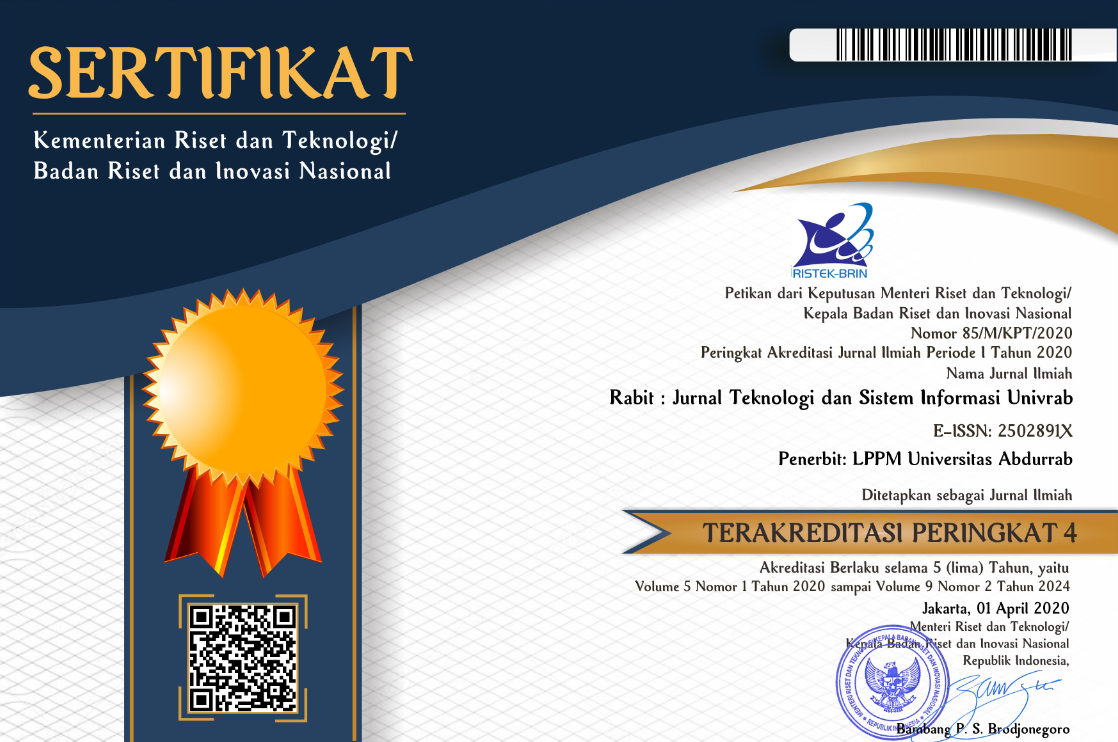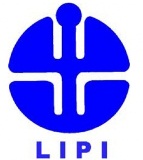IMPLEMENTASI METODE PROTOTYPING PADA RANCANGAN TOKO TANAMAN BERBASIS ANDROID
IMPLEMENTATION OF THE PROTOTYPING METHOD IN ANDROID-BASED PLANT STORE DESIGN
Abstract
Entrepreneurs today are faced with the demand to innovate and have a deep understanding of increasingly sophisticated technology so that they can survive in the competition. One of the business sectors that must survive is the plant business. The plant shop itself sells a variety of seeds, plant seeds, and a variety of plants with cheap to expensive price variants. One of the common problems faced by shop owners is the difficulty of accessing information about plant shops that match the user's wishes. This also applies to shop owners who mostly still promote their plant shops conventionally through brochures, flyers, social media, and so on. Given these complaints and problems, an Android-based plant shop application is needed. This application has been developed using the prototyping method. By applying the prototyping method, users have an active role that makes implementing the system easier. The implementation of this application aims to provide store search facilities that are integrated with GPS using Google Maps, facilitate the plant transaction process, and help plant entrepreneurs in managing and marketing their stores optimally. In the implementation of this application is expected to provide convenience for sellers and plant shop owners in utilizing the plant shop application. The results of testing conducted on ten users show that this application is 53% satisfactory and feasible to use by users, namely plant shop admins and customers.
References
P. Paryanta, H. Basuki, and A. Widhiyatmoko, “Sistem Informasi Penjualan Bibit Tanaman di Toko Higar Agro Berbasis Android,” Go Infotech J. Ilm. STMIK AUB, vol. 27, no. 2, Art. no. 2, Dec. 2021, doi: 10.36309/goi.v27i2.158.
A. Karim et al., Pengantar Teknologi Informasi. Yayasan Labuhanbatu Berbagi Gemilang.
D. Triadi, Bedah Tuntas Fitur Android. Galangpress Publisher, 2013.
M. R. Lubis et al., Pengenalan Teknologi Informasi. Yayasan Kita Menulis, 2020.
D. S. Purnia, R. Ratningsih, M. Surahman, and W. Agustin, “Implementasi Metode Prototyping Pada Rancang Marketplace Rumah Kost Berbasis Mobile,” EVOLUSI J. Sains Dan Manaj., vol. 9, no. 1, Art. no. 1, Apr. 2021, doi: 10.31294/evolusi.v9i1.10145.
K. A. Imania and S. K. Bariah, “Rancangan Pengembangan Instrumen Penilaian Pembelajaran Berbasis Daring,” PETIK J. Pendidik. Teknol. Inf. Dan Komun., vol. 5, no. 1, Art. no. 1, Apr. 2019, doi: 10.31980/jpetik.v5i1.445.
H. Saragih and R. Ramdhany, “Pengaruh Intensi Pelanggan Dalam Berbelanja Online Kembali Melalui Media Teknologi Informasi Forum Jual Beli (Fjb) Kaskus,” J. Sist. Inf., vol. 8, no. 2, Art. no. 2, 2012, doi: 10.21609/jsi.v8i2.331.
R. A. Hendrawan, I. Nurkasanah, E. Suryani, M. Er, Mudjahidin, and A. P. Aristio, “Discovery Shopping eCommerce untuk Meningkatkan Pengalaman Pelanggan pada UMKM Produk Tanaman Herbal, Sayuran, dan Alat Berkebun,” Sewagati, vol. 6, no. 6, Art. no. 6, Sep. 2022, doi: 10.12962/j26139960.v6i6.119.
R. Arifin, Bisnis Hidroponik ala Roni Kebun Sayur. AgroMedia, 2016.
I. R. Bawono, Optimalisasi potensi desa di Indonesia. Gramedia Widiasarana Indonesia, 2019.
F. Yu, R. Stolzenberg, and A. Brem, “Assessment of the mono-disciplinary approaches and interdisciplinary approaches in prototyping practice,” J. Eng. Technol. Manag., vol. 67, p. 101729, Jan. 2023, doi: 10.1016/j.jengtecman.2022.101729.
D. Purnomo, “Model Prototyping Pada Pengembangan Sistem Informasi,” JIMP J. Inform. Merdeka Pasuruan, vol. 2, no. 2, Aug. 2017, doi: 10.37438/jimp.v2i2.67.
P. Li, J. Cao, and X. Ye, “Prototype contrastive learning for point-supervised temporal action detection,” Expert Syst. Appl., vol. 213, p. 118965, Mar. 2023, doi: 10.1016/j.eswa.2022.118965.
A. Permana, N. Jarti, and A. Suryadi, “Pengembangan Aplikasi Monitoring Inventaris Barang Pada Universitas Ibnu Sina Batam Berbasis Web,” J-Com J. Comput., vol. 1, no. 2, Art. no. 2, Jul. 2021, doi: 10.33330/j-com.v2i1.1210.
M. Muslihudin and Oktafianto, Analisis dan Perancangan Sistem Informasi Menggunakan Model Terstruktur dan UML. Penerbit Andi.
E. C. Narendra, M. A. Priyanto, D. A. Y. Putri, S. F. A. Wati, and A. S. Fitri, “Analisis Desain Aplikasi Jahit Pakaian Custom Online Berbasis Mobile,” J. Inform. Dan Tek. Elektro Terap., vol. 11, no. 1, Art. no. 1, Jan. 2023, doi: 10.23960/jitet.v11i1.2873.
A. N. Hidayati, F. Fauziyah, and A. U. Bani, “Design and Development of Data Processing Applications for Make-Up and Wardrobe Service Orders in Excel Wedding Organizer,” J. Sains Dan Teknol. Widyaloka JSTekWid, vol. 2, no. 1, Art. no. 1, 2023, doi: 10.54593/jstekwid.v2i1.130.
A. Voutama, “Sistem Antrian Cucian Mobil Berbasis Website Menggunakan Konsep CRM dan Penerapan UML,” Komputika J. Sist. Komput., vol. 11, no. 1, pp. 102–111, Feb. 2022, doi: 10.34010/komputika.v11i1.4677.
P. Di Felice, G. Paolone, R. Paesani, and M. Marinelli, “Design and Implementation of a Metadata Repository about UML Class Diagrams. A Software Tool Supporting the Automatic Feeding of the Repository,” Electronics, vol. 11, no. 2, Art. no. 2, Jan. 2022, doi: 10.3390/electronics11020201.

This work is licensed under a Creative Commons Attribution-NonCommercial-ShareAlike 4.0 International License.
Copyright Notice
The copyright of the received article shall be assigned to the publisher of the journal. The intended copyright includes the right to publish the article in various forms (including reprints). The journal maintains the publishing rights to published articles. Therefore, the author must submit a statement of the Copyright Transfer Agreement.*)
This work is licensed under a Creative Commons Attribution-NonCommercial-ShareAlike 4.0 International License.
In line with the license, authors and any users (readers and other researchers) are allowed to share and adapt the material only for non-commercial purposes. In addition, the material must be given appropriate credit, provided with a link to the license, and indicated if changes were made. If authors remix, transform or build upon the material, authors must distribute their contributions under the same license as the original.
Please find the rights and licenses in RABIT : Jurnal Teknologi dan Sistem Informasi Univrab. By submitting the article/manuscript of the article, the author(s) accept this policy.
1. License
The non-commercial use of the article will be governed by the Creative Commons Attribution license as currently displayed on Creative Commons Attribution-NonCommercial-ShareAlike 4.0 International License.
2. Author’s Warranties
The author warrants that the article is original, written by stated author(s), has not been published before, contains no unlawful statements, does not infringe the rights of others, is subject to copyright that is vested exclusively in the author and free of any third party rights, and that any necessary written permissions to quote from other sources have been obtained by the author(s).
3. User Rights
RABIT's spirit is to disseminate articles published are as free as possible. Under the Creative Commons license, RABIT permits users to copy, distribute, display, and perform the work for non-commercial purposes only. Users will also need to attribute authors and RABIT on distributing works in the journal.
4. Rights of Authors
Authors retain all their rights to the published works, such as (but not limited to) the following rights;
- Copyright and other proprietary rights relating to the article, such as patent rights,
- The right to use the substance of the article in own future works, including lectures and books,
- The right to reproduce the article for own purposes,
- The right to self-archive the article,
- The right to enter into separate, additional contractual arrangements for the non-exclusive distribution of the article's published version (e.g., post it to an institutional repository or publish it in a book), with an acknowledgment of its initial publication in this journal (RABIT : Jurnal Teknologi dan Sistem Informasi Univrab).
5. Co-Authorship
If the article was jointly prepared by other authors, any authors submitting the manuscript warrants that he/she has been authorized by all co-authors to be agreed on this copyright and license notice (agreement) on their behalf, and agrees to inform his/her co-authors of the terms of this policy. RABIT will not be held liable for anything that may arise due to the author(s) internal dispute. RABIT will only communicate with the corresponding author.
6. Royalties
This agreement entitles the author to no royalties or other fees. To such extent as legally permissible, the author waives his or her right to collect royalties relative to the article in respect of any use of the article by RABIT.
7. Miscellaneous
RABIT will publish the article (or have it published) in the journal if the article’s editorial process is successfully completed. RABIT's editors may modify the article to a style of punctuation, spelling, capitalization, referencing and usage that deems appropriate. The author acknowledges that the article may be published so that it will be publicly accessible and such access will be free of charge for the readers as mentioned in point 3.
 PDF (Bahasa Indonesia)
PDF (Bahasa Indonesia)
 Abstract views: 382
Abstract views: 382
 downloads: 301
downloads: 301

 :
:












